Watch the Market tutorial videos on YouTube
How to buy а trading robot or an indicator
Run your EA on
virtual hosting
virtual hosting
Test аn indicator/trading robot before buying
Want to earn in the Market?
How to present a product for a sell-through
Trading Robots for MetaTrader 5

PLAZA EA is a Multi-Currency, Flexible, Fully Automated and Multi-Faceted Open Tool for Identifying Vulnerabilities in the Market for GOLD ! Not Grid , Not Martingale , Not AI , Not Neural Network , Not Arbitrage . Default Settings for One Сhart XAUUSD or GOLD H1 PLAZA GUIDE Signals Commission Broker Refund Updates My Blog Only 2 Copies of 10 Left for 595 $ Next Price 1190 $ Each position always has a Fixed SL+TP and Virtual Deal Profit Tracking . Any Profit Tra

Golden Algo – The Ultimate AI-Powered Expert Advisor for Gold Traders Golden Algo Expert Advisor is a powerful trading system designed specifically for XAUUSD (Gold). It combines technical indicators with real-time market data—including the US Index and market sentiment—to generate precise trade signals. Each signal is then filtered through an advanced OpenAI-powered process to ensure only high-probability trades are executed. By blending technical analysis, fundamental insights, and artificial

Introducing my new Expert Advisor Beatrix Inventor, Beatrix Inventor EA uses the concept of following trends in conducting market analysis. Analyzing market trends with the main indicators Bollinger Band and Moving Average, when entering transactions, this EA also considers the Orderblock zone which makes the analysis more accurate. The algorithm used in developing this EA is a reliable algorithm both in entry and managing floating minus.
This EA is designed to be used on the XAUUSD / GOLD pair

Live signal
Live signal Blueberry Standard
Live signal Blueberry Raw
Find out more here: https://www.mql5.com/en/users/prizmal/seller
Keep an eye out for the latest news, updates, and developments by subscribing to the official PrizmaL Channel! PrizmaL Gold – Advanced Trading Robot with Proven Championship Performance.
PrizmaL is a high-performance trading robot that secured 2nd place in the World Championship of Trading Robots (MetaQuotes Automated Trading Championship 2008).
Designe

Introducing Quantum Emperor EA , the groundbreaking MQL5 expert advisor that's transforming the way you trade the prestigious GBPUSD pair! Developed by a team of experienced traders with trading experience of over 13 years. IMPORTANT! After the purchase please send me a private message to receive the installation manual and the setup instructions. ***Buy Quantum Emperor EA and you could get Quantum Wizard or Quantum StarMan or Quantum Gold Emperor for free !*** Ask in private for more details

Aura Neuron is a distinctive Expert Advisor that continues the Aura series of trading systems. By leveraging advanced Neural Networks and cutting-edge classic trading strategies, Aura Neuron offers an innovative approach with excellent potential performance. Fully automated, this Expert Advisor is designed to trade currency pairs such as XAUUSD (GOLD). It has demonstrated consistent stability across these pairs from 1999 to 2023. The system avoids dangerous money management techniques, such as m

Introducing AIQ—The Evolution of Autonomous Trading Intelligence I'm proud to present AIQ (Autonomous Intelligence), the next generation of AI-powered trading technology. Building on the foundation that made Mean Machine GPT revolutionary, AIQ introduces a groundbreaking multi-tier API redundancy system with automated fallback protocols, combined with advanced breakout/reversion techniques that capitalize on market inefficiencies with zero slippage execution. AIQ harnesses the power of cutting-

Quantum Bitcoin EA : There is no such thing as impossible, it's only a matter of figuring out how to do it!
Step into the future of Bitcoin trading with Quantum Bitcoin EA , the latest masterpiece from one of the top MQL5 sellers. Designed for traders who demand performance, precision, and stability, Quantum Bitcoin redefines what's possible in the volatile world of cryptocurrency.
IMPORTANT! After the purchase please send me a private message to receive the installation manual and the setup i

Aura Bitcoin Hash EA is a distinctive Expert Advisor that continues the Aura series of trading systems. By leveraging advanced Neural Networks and cutting-edge classic trading strategies, Aura BTC offers an innovative approach with excellent potential performance. Fully automated, this Expert Advisor is designed to trade currency pair BTCUSD (Bitcoin). It has demonstrated consistent stability across these pairs from 2017 to 2025. The system avoids dangerous money management techniques, such as m

Live signal
Find out more here: https://www.mql5.com/en/users/prizmal/seller
PrizmaL Scalper - Intraday Scalping for XAUUSD
This trading algorithm is designed for speculative trading in the spot gold market XAUUSD.
It employs advanced market microstructure analysis techniques, reacting to price impulses and liquidity in real time. The algorithm is not subject to swaps, making it particularly effective for active intraday trading.
Optimized risk management and dynamic adaptation to volatil

Join our Giveaway: Buy now for a chance to win one of 8 prop challenge fees (up to $1187).
Contact me via MQL5 messaging immediately after purchase to confirm participation. Only 12 orders left—act fast! Winners will be randomly selected. Live Signal . Only 2 spots left at $599 – Price increases to $624 soon.
Gold Fighter MT5 is an Expert Advisor designed for trading Gold (XAU/USD)
Using AI models from xAI and OpenAI as trend-filtering feature to optimize trade entries. It's built for stabili

Hello, traders! I am Quantum Queen, the newest and a very powerful addition to the Quantum Family of Expert Advisors. My specialty? GOLD. Yes, I trade the XAUUSD pair with precision and confidence, bringing you unparalleled trading opportunities on the glittering gold market. I am here to prove that I am the most advanced Gold trading Expert Advisor ever created.
IMPORTANT! After the purchase please send me a private message to receive the installation manual and the setup instructions.
Live

The GBPUSD Robot MT5 is an advanced automated trading system meticulously designed for the specific dynamics of the GBP/USD currency pair. Utilizing advanced technical analysis, the robot assesses historical and real-time data to identify potential trends , key support and resistance levels, and other relevant market signals specific to GBP/USD. The Robot opens positions every day, from Monday to Friday, and all positions are secured with Take Profit, Stop Loss, Trailing Stop, Break-E

Way To Stars is an automated trading system based on the classic night scalping logic, designed to capture short-term opportunities during the lowest volatility periods of the market.
Nighttime trading tends to have lower noise and weaker trends, making it suitable for high-frequency and precise operations. This type of strategy has existed in the field of algorithmic trading for over two decades. Way To Stars inherits this mature framework and rebuilds its algorithm to fully adapt to current

Introducing our advanced Scalping Forex Robot. The scalping algorithm is built to spot high-probability entry and exit points, ensuring that every trade is executed with the highest chance of success within the M1 timeframe . The best pair to use with the Scalping Robot is XAUUSD .This robot is perfect for traders who prefer the scalping method and want to take advantage of rapid price movements without having to manually monitor the charts. It is suitable for both beginners looking for an autom
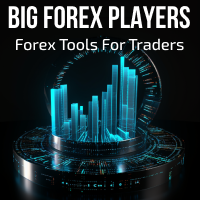
We proudly present our cutting-edge robot, the Big Forex Players EA designed to maximize your trading potential, minimize emotional trading, and make smarter decisions powered by cutting-edge technology. The whole system in this EA took us many months to build, and then we spent a lot of time testing it. This unique EA includes three distinct strategies that can be used independently or in together. The robot receives the positions of the biggest Banks (positions are sent from our database t

After 6 Years of Successful Manual Trading, My Strategies Are Now Available as Expert Advisors!
Introducing the DAX Killer EA – a trading system built for the DAX Index from years of hands-on experience, extensive testing, and a steadfast commitment to secure, strategic trading. NO GRID, NO MARTINGALE, TIGHT SL EVERY TRADE. ONE TRADE PER DAY . NO LOT MULTIPLIER. The price of the EA will increase by $100 with every 10 purchases. ICTRADING LIVE SIGNAL DAX Killer Public Chat Group IMPOR

Introducing Stage 7.0—A Revolutionary Leap in AI Trading Technology I'm proud to announce my most significant update yet: Stage 7.0. This groundbreaking release introduces AI Position Management, which dynamically modifies Take Profit and Stop Loss levels in real-time, ensuring optimal position management with priority handling across all symbols. Stage 7.0 harnesses the power of cutting-edge AI models, including DeepSeek R1 and OpenAI's O3 mini, delivering enhanced reasoning capabilities acros

Live signal
Find out more here: https://www.mql5.com/en/users/prizmal/seller
The strategy uses an averaging trading approach, relying on the Stochastic Oscillator and Bollinger Bands as the main indicators. It consistently implements dynamic take-profit and stop-loss levels for each trade. Optimization was conducted using 14 years of data (from 2010 to 2024) on the IC Markets server with a Standard account type.
Recommendations:
Currency Pair: AUDCAD Minimum Deposit: $500 USD Account: H

The Bitcoin Robot MT5 is engineered to execute Bitcoin trades with unparalleled efficiency and precision . Developed by a team of experienced traders and developers, our Bitcoin Robot employs a sophisticated algorithmic approach (price action, trend as well as two personalized indicators) to analyze market and execute trades swiftly with M5 timeframe , ensuring that you never miss out on lucrative opportunities. No grid, no martingale, no hedging, EA only open one position at the same time. Bit

SmartChoise EA – Neural Network–Powered Trading System for XAU/USD (Gold) on M1 Timeframe This EA is built for long-term, controlled growth—understanding and aligning it with your risk tolerance is key to its success. Uses a neural network–based engine that continuously analyzes real-time market data to adapt trading strategies according to current market conditions. This approach helps optimize trade entries, improve risk control, and manage exposure intelligently. Unlike systems that rely on m

ONLY 2 COPIES OUT OF 10 LEFT AT $499, NEXT PRICE $699
Synthara MT5 EA is Fully Automated Expert Advisor specifically designed to run on the XAUUSD/GOLD pair. Hello everyone, I am currently launching the newest and best product from its predecessor. Synthara MT5 EA is more selective and accurate in signal entry and better in managing existing transactions. Synthara MT5 EA analyzes markets based on trends, overbought and oversold zones and price action.
Synthara MT5 EA can identify trends very w

Quantum Perceptor X
An intelligent execution algorithm built not for theory — but for the reality of the market. Quantum Perceptor X is not just another expert advisor.
It is a self-directed trading system governed in real time by the DeepSeek engine — a cognitive AI module that monitors capital behavior and helps the system adapt dynamically to market conditions. Unlike traditional bots based on indicators or backtest-optimized templates, Quantum Perceptor X uses a minimalist yet highly intell

Contact me for discount before purchasing!
AI-Driven Technology with ChatGPT Turbo Infinity EA is an advanced trading Expert Advisor designed for GBPUSD, XAUUSD and AUDCAD. It focuses on safety, consistent returns, and infinite profitability. Unlike many other EAs, which rely on high-risk strategies such as martingale or grid trading. Infinity EA employs a disciplined, profitable scalping strategy based on neural network embedded over machine learning, data analytics AI based technology provid

Alpha Flow EA: Elevate Your Trading to New Heights Introducing Alpha Flow EA —a state-of-the-art trading advisor designed to transform your trading experience through strategic precision, adaptability, and advanced market analysis. Built with proprietary trading algorithms and deep market insights, Alpha Flow EA delivers exceptional performance across diverse trading environments, helping you stay ahead of market trends. What Makes Alpha Flow EA Stand Out? Sophisticated Market Analysis Alpha Fl

LAUNCH PROMO: Final price: 1,700$ Only 2 copies left at $399. Next price will be $499 Get 1 EA for free (for 2 trade accounts) -> contact me after purchase Instruction Blog Link to Channel
Welcome to ZenFlow! ZenFlow is an advanced EA designed to adapt to changing market trends with precision and speed. It is optimized to trade the XAUUSD( or GOLD) symbol and should be run on only one chart. This EA uses a sophisticated trend-following strategy combined with a momentum-based indicator that ide

Eternal Engine is an advanced EA that integrates multiple indicators with grid and Martingale strategies. Its core feature is precise entry point control, enabling it to perform exceptionally well even in complex market environments. Eternal Engine EA offers numerous trading opportunities, is not sensitive to spreads, and ensures accurate execution of every trade through strict entry point management. The strategy has been proven in live trading, providing over a year of low-drawdown real-time s

Trading Signal: https://www.mql5.com/en/signals/2304793 Official Group: Varko Technologies Currency pair: XAUUSD Timeframe: M1 Account: Hedging Varko Technologies is not a business, it is a philosophy of freedom. I'm not interested in playing games with a price increase and supposedly a limit on the number of copies sold. I am interested in long-term cooperation and building a reputation. My goal is to constantly improve and optimize the product for changing market conditions.
Vark

Monitoring of real trading Advisor - https://www.mql5.com/en/signals/2264971 My other products - click here Keep in mind that the results on different brokers may differ, I recommend testing on your broker before using it (you can ask me for a list of recommended brokers in the PM). Read the blog post with the description of the adviser before starting work and if you have any additional questions, write to me in the PM. A fully automatic Expert Advisor that does not require additional

Introducing Eagle Odyssey EA with excellent capabilities in automatic trading whose analysis is based on the orderblock concept. Order blocks are often formed in response to significant market moves driven by institutions. When a large order is placed in the market (such as buying or selling a large amount of an asset), the price tends to move to a certain level to "fill" that order. Once this process happens, the area where the institutional order took place acts as a level of support or resist

After years of manually trading gold and watching its every move, I finally decided to transform my proven strategies into an automated solution. I was fortunate enough to meet an exceptional programmer who shared my passion for the markets. What started as casual discussions about trading turned into a partnership that would lead to creating Goldenity - a sophisticated AI-powered system that combines my trading experience with cutting-edge machine learning. We spent the last year pouring our h

Razor EA is a Fully Automated and Open System with Drawdown Protection and Fixed SL.
Only 2 Copies of 10 Left for 545 $ Next Price 990 $
Signals Guide Commission Refund Updates My Blog Not Simple Grid, Not Martingale, Not AI , Not Neural Network. Default Settings for One chart AUDCAD M15 (Supports 1OHLC mode for weak PCs) This is a Multi-Currency strategy for three currency pairs AUDCAD, AUDNZD, NZDCAD that works on ONE chart.
The Algorithm easily passes verification based on Real Quo

PROP FIRM READY! ( download SETFILE ) LAUNCH PROMO: Only a few copies left at current price! Final price: 990$ Get 1 EA for free (for 2 trade accounts) -> contact me after purchase Ultimate Combo Deal -> click here JOIN PUBLIC GROUP: Click here
New V2.2 Live Signal
Welcome to the Gold Reaper! Build on the very succesfull Goldtrade Pro, this EA has been designed to run on multiple timeframes at the same time, and has the option to set the trade frequency from very conservative to extreme

After 6 Years of Successful Manual Trading, My Strategies Are Now Available as Expert Advisors! Introducing the WallStreetKiller EA – a trading system built for the US30 from years of hands-on experience, extensive testing, and a steadfast commitment to secure, strategic trading. NO GRID, NO MARTINGALE, TIGHT SL EVERY TRADE. ONE TRADE PER DAY . NO LOT MULTIPLIER. The price of the EA will increase by $100 with every 10 purchases. ICTRADING LIVE 10K SIGNAL (You won´t see many other sellers wi

Vortex - your investment in the future
The Vortex Gold EA expert Advisor made specifically for trading gold (XAU/USD) on the Metatrader platform. Built using proprietary indicators and secret author's algorithms, this EA employs a comprehensive trading strategy designed to capture profitable movements in the gold market. Key components of its strategy include classic indicators as CCI and Parabolic Indicator, which work together to accurately signal ideal entry and exit points. At the heart of V

EvoTrade: The First Self-Learning Trading System on the Market Allow me to introduce EvoTrade —a unique trading advisor built using cutting-edge technologies in computer vision and data analysis. It is the first self-learning trading system on the market, operating in real-time. EvoTrade analyzes market conditions, adapts strategies, and dynamically adjusts to changes, delivering exceptional precision in any environment. EvoTrade employs advanced neural networks, including Long Short-Term Memory

EA Gold Stuff mt5 is an Expert Advisor designed specifically for trading gold. The operation is based on opening orders using the Gold Stuff mt5 indicator, thus the EA works according to the "Trend Follow" strategy, which means following the trend. For Expert Advisor need hedge type account Contact me immediately after the purchase to get personal bonus! You can get a free copy of our Strong Support and Trend Scanner indicator, please pm. me! Settings and manual here
Please note that I

Are you going to keep watching others win, or are you ready to play for real? NODE Neural EA was the warm-up. AXIS is the real game. This is where you start playing seriously. AXIS Neural EA This is not just another EA. It’s the system used by traders who know what they’re doing. Trades on EUR/USD, GBP/USD, and AUD/USD – Not only diversifies but maximizes your opportunities in the most liquid pairs. Historic monthly return of 4.74% – Real data, not simulations or inflated promises. Surgical prec

Revert Edge is a carefully crafted algorithm built on 7+ years of live trading experience. Its core focus is slow, steady account growth with an emphasis on long-term performance and not unsustainable, quick, short-term gains. The EA is developed to trade multiple currencies such as AUDCAD, AUDUSD, EURCAD, EURGBP, EURUSD, GBPUSD, NZDCAD, NZDJPY, USDJPY and more! It uses a mean reversion strategy and takes advantage of price levels that are sensitive to some sort of reaction which the EA takes ad

Forex EA Trading Channel on MQL5: Join my MQL5 channel to update the latest news from me. My community of over 14,000 members on MQL5 .
ONLY 3 COPIES OUT OF 10 LEFT AT $299! After that, the price will be raised to $399.
- REAL SIGNAL Default Setting: https://www.mql5.com/en/signals/2302784 AI Gold Scalper applies the latest GPT-4o model (GPT-4o by OpenAI) in XAU/USD trading designed based on a multi-layered algorithmic framework, integrating unstructured data processing and cross-market a

Live Signal IC Markets, Raw Spread Account
Current price: $499.99 . Next price: $549.99 . The price will keep increasing to limit the user ownership. Final price: $2499.99. Zenox is a state-of-the-art AI multi-pair swing trading robot that follows trends and diversifies risk across seven currency pairs. Months of dedicated development have resulted in a powerful trading algorithm.
I used a high-quality dataset starting from the year 2000 up to today. The AI was trained on a server using the la

Japan AI Exo Scalp EA – An advanced short‑term trading robot for MT5 that fuses Japanese financial engineering with cutting‑edge GPT technology through a “Three Arrows” consensus framework. AI Consensus Algorithm: Three GPT models (Lightning Scalper, Deep Trend Master, Adaptive GPT) coordinate to determine market direction, providing neutral and well‑balanced trade decisions. Japanese Financial Engineering: Condenses domestic quantitative expertise into a high‑precision short‑term trading logic.

GoldenHour Expert Advisor A precision scalping system for XAUUSD (Gold) that focuses on high-probability single-position trades. The EA executes 2-3 carefully selected trades per day during optimal market conditions, avoiding risky multi-position or martingale strategies.
NEXT price 599$ , 7 copies left
Trading Approach: - Single position trading (no multiple positions) - Short-term scalping with controlled exposure - Average holding time: 15-45 minutes - 40-60 trades per month - No grid, m

EA Gold Isis – A Safe and Effective Gold Trading Solution Only 1 copies left at current price! Next price: $598 Final price: $1998 LIVE SIGNAL MT4 version Hello! I am EA Gold Isis, the second EA in the Diamond Forex Group family, specifically designed for trading gold (XAU/USD). With exceptional features and a safety-first approach, I promise to deliver a sustainable and effective gold trading experience for traders.
What Makes EA Gold Isis Different?
- Dynamic Stop Loss (SL): The E

EA has a live track record with 4.5 years of stable trading with low drawdown: Live performance MT4 version can be found here Waka Waka is the advanced grid system which already works on real accounts for years. Instead of fitting the system to reflect historical data (like most people do) it was designed to exploit existing market inefficiencies. Therefore it is not a simple "hit and miss" system which only survives by using grid. Instead it uses real market mechanics to its advantage to make p

The EUR/USD Multi-Strategy Trading Robot MT5 is an advanced tool designed to optimize trading by combining 3 key systems: daily trading, volume analysis, and Fibonacci retracement levels. This robot works by integrating these different approaches to create a more dynamic and adaptable strategy for trading the EUR/USD pair . EA adapts to different market conditions, this makes it an ideal solution for traders looking to enhance their trading strategy with a powerful, multi-faceted approach. By co

Fully Automated EA based on Supply and Demand Principles. The first Supply and Demand EA that is offering Complete Automation . Now trading Becomes Effortless, offering full control over your trading strategy through a User-Friendly graphical Trading Panel. You get a Super High Quality Algorithmic Trading Software that covers all trading styles Manual, Semi-Auto and Full-Auto. Through various settings and customization options, every trader can create a strategy that fits their own needs and per

SPECIAL BIG DISCOUNT! ->> Buy Forex GOLD Investor with -60% OFF! NOTE: Promo price: $197 (Regular Price: $497) - The offer ends soon! Forex GOLD Investor Live Performance: https://www.mql5.com/en/signals/2276118 Forex GOLD Investor is one of the best expert advisors developed to trade on GOLD(XAUUSD) in the forex market. Forex GOLD Investor consists of 2 trading systems . The first one is based on scalping trading strategy and the second system has time based dependency which opens up to 2 tr

HFT PropFirm EA MT5 is also known as Green Man due to its distinctive logo by Dilwyn Tng, is an Expert Advisor (EA) crafted specifically for overcoming challenges or evaluations from proprietary trading firms (prop firms) that permit High-Frequency Trading (HFT) strategies.
Now Greenman HFT PropFirm EA MT5 is fully automatic! Free 1 All-In-One Breakout EA account licence with purchase of HFT PropFirm EA MT5
Passing HFT MT5 Challenge Performance Monitor:
Broker: Fusion Market
Login: 151264

The Expert Advisor is a system designed to recover unprofitable positions. The author's algorithm locks a losing position, splits it into many separate parts, and closes each of them separately. Easy setup, delayed launch in case of drawdown, locking, disabling other Expert Advisors, averaging with trend filtering and partial closing of a losing position are built into one tool. It is the use of closing losses in parts that allows you to reduce losses with a lower deposit load, which ensures saf

XAU Oneshot EA - Trade Gold Smarter with a Single-Order Strategy Live Signal : https://www.mql5.com/en/signals/2298078 XAU Oneshot EA is an automated Expert Advisor designed for XAUUSD (Gold) trading. Built for simplicity and safety, it uses a single-order strategy to maximize profits while minimizing risks in trending markets. FLASH SALE : The price is slashed by 40% to $599 for one day only on April 26, 2025. The original price is $899. Why Choose XAU Oneshot EA? One Trade, One Focus : E
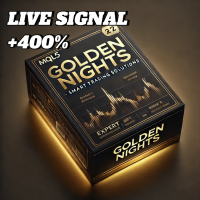
Golden Nights EA – Mastering Nighttime Gold Scalping The Golden Nights EA is a night-time scalping strategy specifically optimized for XAUUSD, utilizing the most favorable market conditions: the low volatility and calm hours of the night.
Live Results and Backtesting The performance of Golden Nights EA is also tested in a real market environment. Check out the live results:
High risk: [ SIGNAL LINK ] Low-risk, with recovery mode: [ SIGNAL LINK ]
Why Choose Golden Nights EA? Lower Volatility,

Gold Scalping Expert is a very intelligent smart algorithm which exploits the reaction of gold during various high-impact events like geo-political news, pandemics, and economic changes. This system trades breakouts using the popular zig-zag indicator by placing pending orders at the turning points and when the price breaks out beyond these levels the orders will get triggered. The EA is using a very smart trailing stop and dynamic stop loss to protect your account and manage the risk properly

HOW SIGMA EA WAS DEVELOPED
It all started in 2015 when I started my crypto trading journey and bought a bitcoin, Initially I tried each and every stratagey available at that time, I was lucky enough to cash the 2017 crypto bull run even though I was still hopping from one stratagey to another, Finally I came to know about the supply and demand concept which intrigued me alot and also made lots of sense, I started working on it with great results but the crypto market begun to crash and I was s

Overview
AITrendBooster is our latest intelligent trading system, designed to utilize trend-following strategies with scaling positions to significantly enhance profitability while effectively reducing drawdowns during unfavorable market conditions. This system incorporates cutting-edge deep learning technology to significantly improve trend recognition accuracy. The core design goal of the system is to maintain break-even performance during range-bound markets while achieving higher profits t
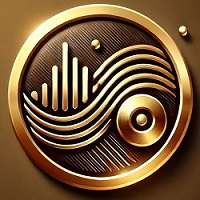
Golden Rhythm - Adaptive Trading with Built-in News Protection Only 2/5 copies left at price $250. Offer is available for 24H. Next price will be $300. Golden Rhythm - Master Volatility with Ease Access the expert details here . Please join our channel here .
Take advantage of cutting-edge technology with Golden Rhythm! This EA is optimized to adapt to volatile markets, giving traders the tools they need to control risk . Whether you’re just starting out or you're a pro trader looking for advanc

Welcome to Advanced Indices EA - a safe, long-term EA with great risk-reward potential. Now, 498 USD for 10 buyers, next price 598 USD.( Only 1 copy left. ) Only 100 copies available on MQL5. LIVE SIGNAL BACKTEST GUIDE MT4 VERSION: Please message me for more details. Advanced Indices EA is the first EA I’ve designed to trade multiple instruments like US30 (Dow Jones), USTEC (Ndx100, Nas100, Nasdaq). The EA uses a 100% price action strategy from the previous day to find entries for today. Each
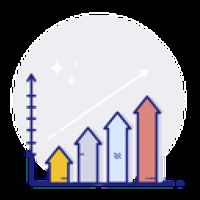
ONE OF THE FEW ROBOTS WITH A SIGNAL HISTORY OF MORE THAN 3 YEARS AND AMONG THE TOP 10. LINK TO MY ROBOTS AND SIGNAL PRESETS: In my profile there is a link to download the PRESETS that I use in my SIGNALS, you can download and backtest for free, there are explanations in the README MANUAL. https://www.mql5.com/en/users/tec_daniel SOME EXAMPLES OF SIGNALS ON “mql5.com” BEING TRADED BY THE ROBOT, ALL MY SIGNALS ARE TRADED BY THE ROBOT, I ONLY CHANGE PRESET SETTINGS: https://www.mql5.com/en/user

Scalpine is an intra-day trend following and reversal system that attempts to take advantage of high accuracy entries.
IMPORTANT! Contact me after purchase for instructions and a bonus!
Scalpine live signal coming soon! Current price will be increased. Limited time price 99 USD
No grid, no martingale. Every trade has a virtual take profit and virtual stoploss
Interactive trade panel and precise lot size settings
Recommended Chart: EURUSD, GBPUSD, USDCHF
Timeframe: H1
Inputs Lot Size Calculatio

LAUNCH PROMO: Only a few copies left at current price! Final price: 990$ NEW: Buy Goldbot One and choose 1 EA for free!! (for 2 trade accounts)
JOIN PUBLIC GROUP: Click here Ultimate Combo Deal -> click here LIVE SIGNAL
Introducing Goldbot One , a highly sophisticated trading robot engineered for the gold market. With its focus on breakout trading, Goldbot One leverages both support and resistance levels to identify prime trading opportunities. This expert advisor is crafted for trade

CyNera: Your Trading, Our Technology Signals >400%: CyNera Signals >500%: CyNera Turbo Manual & set files: contact me after purchase to receive the manual and set files Price: The price increases based on the number of licenses sold Available copies: 4 Trading gold, one of the most volatile instruments in the market, demands precision, in-depth analysis, and strong risk management. CyNera Expert Advisor seamlessly integrates these elements into a sophisticated system designed for optimal go

BTC Master Pro Your Trusted Partner in Bitcoin Trading.
BTC Master Pro is the ultimate solution for navigating the unpredictable crypto market with confidence. This advanced Expert Advisor is built on safe and reliable strategies, ensuring every trade is executed with precision and care. If you have any questions or need guidance before or after purchasing, feel free to send me a private message. My team and I are here to assist you every step of the way. Current price: 377$ -> Next pric

The EA proves its effectiveness with real results – backtesting is no longer relevant and does not accurately reflect this EA's performance.
Live Signal-1 : Click here MT4 Version : Click Here Welcome to Nasdaq Algo Trading
This EA (Expert Advisor) is created and designed by a team with over 13 years of programming and trading experience.
The EA focuses on developing a system that can deliver long-term and stable profits. It employs risk-free strategies, avoiding Martingale, Grid, and Hedg

Aurum EA I t is a Fully Automatic Accessible System with Open Optimization Parameters and a Recovery GEx Mechanism in Real Time.
Only 3 Copies of 10 Left for 395 $ Next Price 999 $
Aurum GUIDE Signals Commission Broker Refund Updates My Blog Not Grid , Not Martingale , Not AI , Not Neural Network. Default Settings for One chart XAUUSD/GOLD M15 Each position always has a Fixed SL/TP and Deal Profit Tracking (DPT) . The Algorithm has a Market Volatil
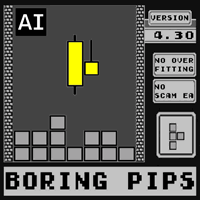
Have you ever wondered why most expert advisors are not effective in live trading, despite their perfect backtest performance?
The most likely answer is Over-fitting . Many EAs are created to ‘learn’ and adapt perfectly to the available historical data, but they fail to predict the future due to a lack of generalizability in the constructed model. Some developers simply don't know about the existence of over-fitting, or they know but don't have a way to prevent it. Others exploit it as a tool

EA Forex Scalping is an Expert Advisor designed specifically for 3 major currency pairs: EURUSD, USDJPY, and GBPUSD. Signals Only 1 Copy Left Out of 10 at this price Next Price: $298 Available for MT4 and MT5 Recommendation combo: Best used in combination with EA US30 Scalper and Nasdaq Algo for diversified investment.
Not Grid, Not Martingale, Not AI, Not Neural Network, Not Arbitrage. Every trade has a hard-set Stop Loss (SL). SL is different for each currency pair. Each trade is monitored a

How many more times will you watch the market take your money? I don’t know about you, but most traders have something in common: They win a little, get excited, and then lose it all on a bad day. The reason is always the same: they use mediocre tools and believe luck will save them. Does that sound familiar? Then listen closely, because this might hurt: The market does not reward dreamers. If you trade like a beginner, you’ll lose like one.
Do you want to change that? Here is the only solutio

Zonda EA I t is a Fully Automatic System with Open Optimization Parameters and a Recovery Mechanism in Real Time.
Only 6 Copies of 10 Left for 390 $ Next Price 990 $
Zonda GUIDE Signals Commission Refund Updates My Blog Not Grid , Not Martingale , Not AI , Not Neural Network. Default Settings for One chart GBPUSD M15 Each position always has a Fixed SL and Full Deal Tracking (FDT) , even if it is in a DrawDown. This is a Daily Breakout Strategy (DBS

Gapscalper AI is an advanced AI-powered trading algorithm that intelligently detects Fair Value Gaps (FVG) and combines them with traditional technical analysis to forecast price movements with high precision. At its core, the system leverages a proprietary reinforcement learning model that has been meticulously trained to identify hidden market inefficiencies and exploit them with dynamic trade execution strategies. This cutting-edge approach allows the EA to recognize high-probability setups a

Special offer : ALL TOOLS , just $35 each! New tools will be $30 for the first week or the first 3 purchases ! Trading Tools Channel on MQL5 : Join my MQL5 channel to update the latest news from me Let's start with the outstanding features: The EA is equipped with a NEWS FILTER and an RSI FILTER. Low risk (some currency pairs have a DrawDown of <10%, even 5%). This EA does not use any martingale or grid functions. The EA can display visual zones for manual trading if desired. First
The MetaTrader Market is the only store where you can download a free demo trading robot for testing and optimization using historical data.
Read the application overview and reviews from other customers, download it right to your terminal and test a trading robot before you buy. Only on the MetaTrader Market you can test an application absolutely free of charge.
You are missing trading opportunities:
- Free trading apps
- Over 8,000 signals for copying
- Economic news for exploring financial markets
Registration
Log in
If you do not have an account, please register
Allow the use of cookies to log in to the MQL5.com website.
Please enable the necessary setting in your browser, otherwise you will not be able to log in.